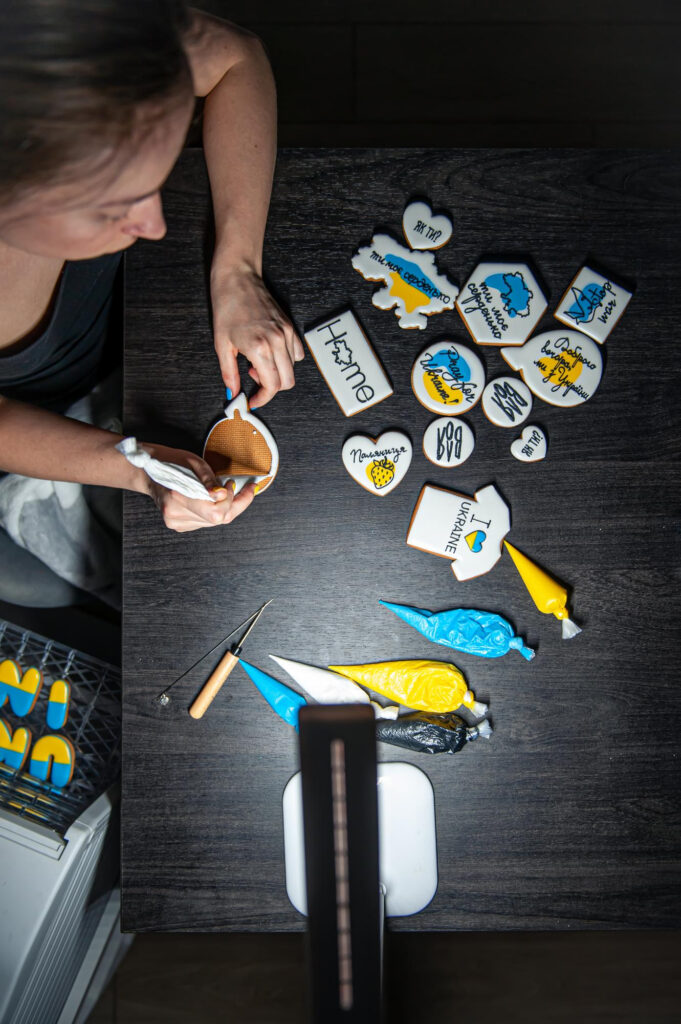Restaurants have access to a vast amount of customer data that, when properly leveraged, can drive business decisions and improve overall performance. By utilizing customer ordering data from online platforms and analyzing customer insights, restaurants can gain a deeper understanding of their clientele, personalize their marketing efforts, and enhance customer relationships.
From my experiences gained at Papa John’s, the ability to leverage customer data is a powerful tool to use to separate yourself from your competition, increase sales and to make sound business decisions.
Let’s jump into effective strategies for leveraging customer data to optimize your restaurant’s operations and drive revenue.
The Power of Customer Data

Customer data is a valuable asset that provides insights into customer preferences, ordering habits, and demographics. By collecting and analyzing this data, restaurants can make informed business decisions and tailor their offerings to meet the needs and expectations of their customers. Here are some key benefits of leveraging customer data:
Understanding Your Customers: Customer data allows you to gain a deeper understanding of your target audience. By analyzing their ordering behavior and preferences, you can identify your most loyal customers, their favorite menu items, and the times they are most likely to order.
Enhancing Customer Relationships: With customer data, you can personalize your marketing efforts and build stronger relationships with your customers. By sending targeted offers, personalized recommendations, and exclusive promotions, you can increase customer loyalty and encourage repeat business.
Optimizing Menu and Inventory: Customer data can help you optimize your menu and inventory management. By analyzing which menu items are most popular and when they are frequently ordered, you can make data-driven decisions about menu changes, inventory levels, and food waste reduction.
Driving Revenue: Leveraging customer data can lead to increased revenue by identifying upselling and cross-selling opportunities. By understanding customers’ preferences, you can suggest complementary menu items or offer personalized promotions that entice them to spend more.
Collecting Customer Data

Now that we understand the power of customer data, let’s explore some effective strategies for collecting and utilizing this valuable resource.
To effectively leverage customer data, you first need to collect it. There are several methods you can use to gather customer information:
Direct Request
One of the simplest ways to collect customer data is through direct requests. By offering incentives such as free Wi-Fi or promotional offers, you can encourage customers to provide their name, email address, birthday, and other contact information. This data can be collected at the point of sale or through online registration forms.
Rewards Programs
Implementing a rewards program can be an effective way to collect customer data while fostering customer loyalty. By offering rewards in exchange for registration, such as discounts or exclusive offers, you can incentivize customers to provide their information. This allows you to track their purchasing history and preferences, further enhancing your understanding of their needs and preferences.
Online Ordering Platforms
If your restaurant offers online ordering, take advantage of the customer data collected through your platform. Online ordering platforms typically gather customer information, including names, addresses, and order history. By integrating your online ordering platform with a customer relationship management (CRM) system, you can centralize and analyze this data to gain valuable insights.
Third-Party Apps
If you partner with third-party delivery apps, such as GrubHub or DoorDash, you can still collect customer data indirectly. These apps track customer habits and preferences, providing you with valuable information about their ordering behavior.
While you may not have direct access to this data, you can work with the app provider to gain insights and tailor your marketing efforts accordingly.
Analyzing Customer Data

Once you have collected customer data, the next step is to analyze and interpret the information. Here are some key factors to consider when analyzing customer data:
Ordering Habits
Customer data can reveal valuable insights into your customers’ ordering habits. Analyze the frequency of their orders, the time of day they typically place orders, and the types of menu items they prefer. This information can help you identify trends, optimize staffing levels, and determine the most popular offerings.
Customer Preferences
By analyzing customer data, you can gain a better understanding of your customers’ preferences. Identify their favorite menu items, dietary restrictions, and special requests. This knowledge allows you to tailor your menu offerings, create personalized recommendations, and provide a more customized dining experience.
Demographics
Customer data can also provide insights into your customer demographics. Analyze age groups, gender distribution, and geographic locations to understand your target audience better. This information can inform your marketing strategies and help you target specific segments of the population more effectively.
Tracking customer order history can provide valuable information about their loyalty and purchasing behavior. Identify your most loyal customers, their average order value, and the frequency of their visits. This data can help you create targeted loyalty programs, personalized offers, and rewards that encourage repeat business.
Personalizing Marketing Efforts

One of the most powerful ways to leverage customer data is by personalizing your marketing efforts. By tailoring your messages and offers to individual customers, you can increase engagement and drive revenue. Here are some strategies for personalizing your marketing:
Email Marketing
Utilize customer data to create personalized email marketing campaigns. Segment your customer base based on ordering history, preferences, and demographics. Send targeted offers, exclusive promotions, and personalized recommendations that resonate with each segment. This targeted approach will increase open rates, click-through rates, and customer engagement.
Loyalty Programs
Leverage customer data to design and implement loyalty programs that reward customers for their repeat business. Utilize points-based systems, tiered rewards, and personalized incentives to encourage customer loyalty. By analyzing customer data, you can identify the most effective rewards and tailor your loyalty program to meet the needs and preferences of your customers.
Social Media Engagement
Engage with your customers on social media platforms by leveraging customer data. Monitor their interactions, preferences, and feedback to understand their sentiments and preferences. Respond to reviews, comments, and messages in a timely and personalized manner, showing your customers that you value their feedback and are attentive to their needs.
Menu Optimization and Inventory Management

Customer data can play a crucial role in optimizing your menu and managing your inventory more effectively. Here’s how you can use customer data to improve your menu offerings and reduce food waste:
Identify Popular Menu Items
Analyze customer ordering data to identify the most popular menu items. By understanding which dishes are in high demand, you can ensure their availability and optimize your inventory accordingly. Additionally, you can highlight these popular items on your menu to attract more customers.
Reduce Food Waste
Customer data can also help you reduce food waste by providing insights into ordering patterns and preferences. By analyzing data on low-selling items, seasonal variations, and customer feedback, you can make informed decisions about menu adjustments, portion sizes, and ingredient sourcing. This data-driven approach can minimize food waste and improve your overall sustainability efforts.
Test and Introduce New Menu Items
Leverage customer data to test and introduce new menu items. Analyze customer preferences and trends to identify potential gaps or opportunities in your menu offerings. By introducing new dishes that align with customer preferences, you can attract new customers and keep your menu fresh and exciting.
Enhancing the Customer Experience
Customer data can be a valuable tool in enhancing the overall dining experience for your customers. Here are some strategies to leverage customer data to improve customer satisfaction:
Personalized Recommendations
Utilize customer data to provide personalized recommendations to your customers. By analyzing their ordering history and preferences, you can suggest menu items that align with their tastes and dietary restrictions. This personalized approach will make customers feel valued and enhance their overall dining experience.
Special Occasion Recognition
Use customer data to recognize and celebrate special occasions in your customers’ lives. By noting birthdays, anniversaries, or other significant events, you can send personalized offers or surprises to make their visit memorable. This attention to detail will leave a lasting impression and foster customer loyalty.
Feedback and Reviews
Customer data can help you monitor and respond to customer feedback and reviews. By analyzing customer sentiments and preferences, you can address any issues promptly and make improvements based on customer feedback. This proactive approach demonstrates your commitment to customer satisfaction and continuous improvement.
Wrapping-up
Leveraging customer data is a powerful strategy for restaurants to optimize operations, enhance customer relationships, and drive revenue. By collecting and analyzing customer data, you can gain valuable insights into customer preferences, optimize your menu offerings, personalize marketing efforts, and enhance the overall dining experience. By implementing these strategies, your restaurant can stay ahead of the competition and build long-lasting customer loyalty. Embrace the power of customer data and unlock the full potential of your restaurant business.
EZ-Chow not only provides a seamless online ordering solution but also offers invaluable assistance in marketing these solutions to elevate your brand. With EZ-Chow’s expertise, businesses can harness effective strategies and tactics to optimize their online ordering investments. By leveraging EZ-Chow’s comprehensive approach, businesses can ensure that their online ordering solutions not only meet customer demands but also stand out in the crowded digital marketplace. Whether it’s streamlining the ordering process or implementing targeted marketing campaigns, EZ-Chow is the ultimate partner to help businesses thrive in the online ordering landscape.
—————————————————
Author

Marketing,Branding & e-Commerce -Consultant
Click to learn more about Bernie Fussenegger


